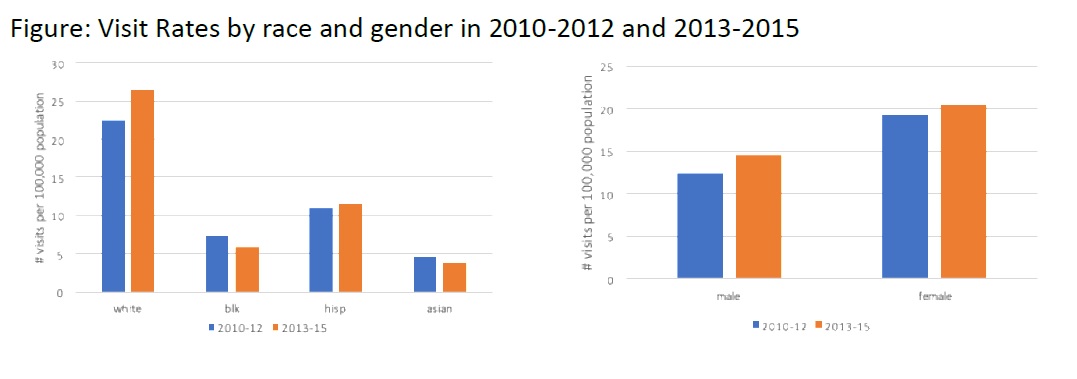Emergency Room utilization among New Jersey children with stone disease based on race and gender
Joseph Barone, M.D., Rachel Davis, M.D., Bridget Lang, n/a, Sammy Elsamra, M.D., Ephrem Olweny, M.D..
Rutgers-Robert Wood Johnson, New Brunswick, NJ, USA.
Emergency Room utilization among New Jersey children with stone disease based on race and gender
BACKGROUND:
Pediatric stone disease is on the rise with some studies suggesting a 5-fold increase in the incidence in the last decade. Risk factors include race, geography, increased salt intake, poor fluid intake, decrease in physical activity, and obesity. Little is known about how race or gender impacts emergency room utilization, but this information would be important from a cost, disease management, and public health perspective.
METHODS:
The New Jersey (NJ) Department of Health public database was used to determine the number of pediatric emergency room (ER) visits for kidney stones for children ≤ 16 years of age; patients were identified using ICD-9 codes for calculus of kidney or ureter. Data were stratified according to gender and race. ER utilization rates for 2010-12 and for 2013-15 were determined, based on NJ population estimates for children ≤ age 16 during the corresponding periods. Rates were compared using chi-squared tests.
RESULTS:
Comparing years 2010-12 to 2013-15, there were 296 and 320 pediatric ER visits for stones respectively, with corresponding rates of 16 per 100,000 vs. 17 per 100,000 respectively (p=0.22). By race, ER utilization for whites trended toward a significant rise from 22 per 100,000 in 2010-12, to 27 per 100,000 in 2013-15 (p=0.07), while rates for the other races and ethnicities remained stable over the time interval (figure). On sub-group analysis, this trend appeared to be driven by white males (p=0.056 for white males vs. 0.44 for white females). By gender, ER utilization was significantly higher for females in both 2010-12 (p=0.0007) and in 2013-15 (p=0.007); however, there was no significant increase for either gender when comparing the two periods.
CONCLUSION:
ER utilization for NJ children with stone disease remained stable overall over 2010-2015, and was significantly higher for females overall, consistent with epidemiology of pediatric stone disease. Utilization rates for white males trended toward a significant increase over this period, with no changes observed for the other sub-groups. Underlying factors driving these trends warrant further investigation. 
Back to 2018 Program




